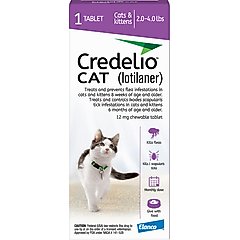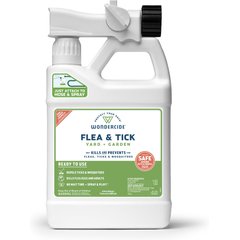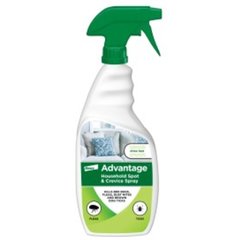Can Indoor Cats Get Fleas?

Photo by Drazen_/E+ via Getty Images
Keeping your cat safely indoors with all of life’s comforts is one of the best things you can do for their overall health and well-being. Still, your adorable feline is still susceptible to pesky parasites—including fleas.
Understanding how indoor cats get fleas, the signs of an infestation, and key ways to prevent fleas can help keep your furry friend itch-free.
Can Indoor Cats Get Fleas?
Yes, indoor-only cats can get fleas even if their precious paws never make contact with the ground outside. These tiny, jumping insects can find their way indoors and take up residence on your poor kitty.
“It’s more common than many pet [parents] realize,” says Sarah Cortright, DVM, veterinarian and chief medical director for the Underdog Community Project, in Orange County, California. “Fleas can enter homes through various means, and once inside, they can quickly establish an infestation.”
Bottom line: Even if your cat never goes outdoors, they are still at risk of getting fleas.
How Indoor-Only Cats Can Still Get Fleas
So how do indoor cats get fleas, anyway? While it’s not as common of a problem for house-dwelling felines compared to those who roam outside, fleas can still happen. Here are some of the most common culprits.
1. From Other Pets at Home
This is one of the most common ways that indoor pets get fleas.
“An adult flea can jump from one animal to another very quickly,” says Katie Merkatoris, DVM, a Wisconsin-based veterinarian specializing in emergency care. “Even if an animal is on flea prevention, fleas can sometimes temporarily survive on their body before finding a new host or laying their eggs in the environment.”
In the case of indoor cats getting fleas, this may happen if you have a dog who often goes outside for walks or potty breaks, or if another dog or animal is introduced to the home (even if just for a short time).
2. From Your Clothes or Shoes
Fleas or their eggs can hitch a ride on your clothing and shoes. “This is especially the case if you’ve been in an area with infested animals—such as a park or a friend’s house with pets,” Dr. Cortright says. “Once inside [your home], fleas can jump onto your cat and start reproducing.”
We know it’s inconvenient to keep your shoes outside or change clothing before coming inside all the time. However, doing this when you’ve closely interacted with other animals just before coming home could make a difference.
3. From Household Pests, Like Mice or Rats
Mice, rats, or other small animals that enter your home are notorious for carrying fleas indoors. “They can expose your cat, even if [your pet] never comes into direct contact with the intruder,” says Dr. Cortright.
To avoid this scenario, take steps to prevent outdoor intruders from entering your home. Seal off potential points of entry, keep food stored in airtight containers, take the trash out regularly, and eliminate clutter where rodents might nest. If you do suspect pests, consider humane traps or professional pest control to address the issue.
4. From the Vet’s Office or Groomer
Veterinary clinics and grooming establishments work hard to prevent flea transmission, which means the risk of acquiring fleas from these places is low, Dr. Merkatoris notes. “However, there is still a risk any time a large number of animals are in one place, particularly if one of them has a high flea burden,” she says.
Even brief contact with an infested pet can lead to flea exposure. Make sure you’re choosing reputable, clean veterinary offices and grooming salons to further reduce your risk.
5. From New Furniture
Though it’s uncommon, indoor cats can get fleas from new furniture you bring into your home. This includes secondhand pieces from online marketplaces or thrift stores, as well as new items shipped directly from warehouses.
Fleas or their eggs may be present if the furniture was stored in a warehouse, transported in a delivery truck with infested items, or from a home that had fleas.
Soft, upholstered items—including bedding, couches, and rugs—are far more likely to harbor flea larvae compared to hard pieces like tables or bookshelves. To reduce the risk, vacuum new furniture thoroughly, wash removable fabric covers, and inspect for flea dirt (tiny black specks).
6. From Sharing Supplies
Fleas will nest inside of soft fabrics, including bedding, blankets, scratching posts, and carriers. If your indoor cat shares these items with another animal, these parasites can easily transfer to their environment—and then to them.
To prevent this, regularly wash your cat’s bedding in hot water, vacuum soft surfaces, and avoid sharing pet supplies with animals whose flea status is unknown. If you bring home secondhand pet items, inspect and clean them thoroughly before use.
My Indoor Cat Has Fleas. What Do I Do?
So, you and your cat are dealing with a case of fleas. Don’t stress—there’s a path to a flea-free world, and it’s not too difficult.
“First, start your cat on a veterinarian-recommended flea prevention medication,” Dr. Cortright advises. “Next, thoroughly clean your home by vacuuming carpets, furniture, and pet bedding, then wash all fabric items in hot water.”
It’s important to treat all pets in the household—even if they don’t show signs of fleas—to break the flea life cycle.
Recommended Products
Consistency is key; continue using flea prevention and cleaning regularly for three months to fully eliminate the infestation. Dr. Cortright adds, “In severe cases, you may need environmental treatments, such as flea sprays or professional extermination.”
Recommended Products
FAQs About Indoor Cats and Fleas
Q: How common is it for an indoor cat to get fleas?
A: It’s not especially common for indoor cats to get fleas, but it happens more often than you might realize. Fleas can enter your home by hitching a ride on other pets, your clothing or shoes, new furniture, shared supplies, or rodents. Cats can also potentially contract fleas at the groomer or at a veterinary office.
Q: How do I tell if my cat has fleas?
A: The most common signs of fleas in cats include scratching (especially around the head and ears), hair loss on the back or shoulder blades, and excessive grooming, Dr. Merkatoris says.
Also look for the presence of flea dirt—aka flea poop—which looks like small black pepper flakes on your cat’s skin, bedding, and other surfaces. These specks will turn red if placed on a wet paper towel.
Q: Do I need to treat my house if my cat has fleas?
A: Yes, treating the entire home environment is crucial to eliminating fleas. Flea eggs, larvae, and pupae can hide in carpets, bedding, and furniture, leading to reinfestation.
Fleas also have a long life cycle—up to three months—so you’ll need to continue diligent cleaning for this period. Vacuuming frequently, washing fabrics in hot water and drying them on high heat thoroughly, and using flea-control products in the home are necessary steps to fully eradicate fleas.
Q: Can fleas live in litter boxes?
A: Litter boxes aren’t the most hospitable environments for fleas—they prefer warm, humid environments and tend to hide in carpets, pet bedding, and upholstery.
However, if fleas or eggs fall off your cat while your kitty is using the litter box, they can temporarily be present there. Regularly cleaning the litter box helps minimize flea risks.
This content was medically reviewed by Hannah Hart, DVM, Chewy veterinarian.











